Genoa welcomes an exhibition dedicated to one of the great protagonists of Italian Mannerism, Giulio Romano (Giulio Pippi de’ Iannuzzi; Rome, 1499 - Mantua, 1546). In fact, from September 20, 2025 to January 17, 2026, theLigustica Academy of Fine Arts is promoting an exhibition and scholarly project entitled Giulio Romano, pupil of Raphael in Genoa - Giulio Pippi’s Stoning of St. Stephen,which involves the city’s main cultural institutions together with national and foreign partners, and revolves around the altarpiece depicting The Stoning of St. Stephen, a masterpiece created by Giulio Romano, preserved in theAbbey of St. Stephen, a stone’s throw from the Academy building.
The project aims to restore the proper centrality to a work that represents one of the most significant examples of Renaissance painting from the Roman area found in Liguria. Created around 1521, the altarpiece is distinguished by its monumentality and compositional quality and was commissioned from Giulio Romano by Monsignor Giovan Matteo Giberti, provost of the Commenda di Santo Stefano and secretary to Pope Leo X. Making the event relevant will be the possibility of seeing, for the first time in more than five centuries, the painting displayed alongside its preparatory cartoon, which is kept in the storerooms of the Vatican Pinacoteca and is rarely loaned because of its fragility and large size.
The cartoon, executed in pencil and charcoal on several sheets of paper glued to canvas, measures 418 by 285 centimeters and is a valuable document for understanding the artist’s creative process. It is not excluded that Raphael, Giulio Romano’s master, supervised the ideational phase and helped define some of the drawing’s steps. And for its art-historical value, the loan granted by the Vatican Museums represents an exceptional circumstance. Director Barbara Jatta and curator Fabrizio Biferali have welcomed the Genoese proposal, recognizing its scientific and didactic character, and have expressed willingness to collaborate on the publication of a monographic study that will be produced at the end of the exhibition.
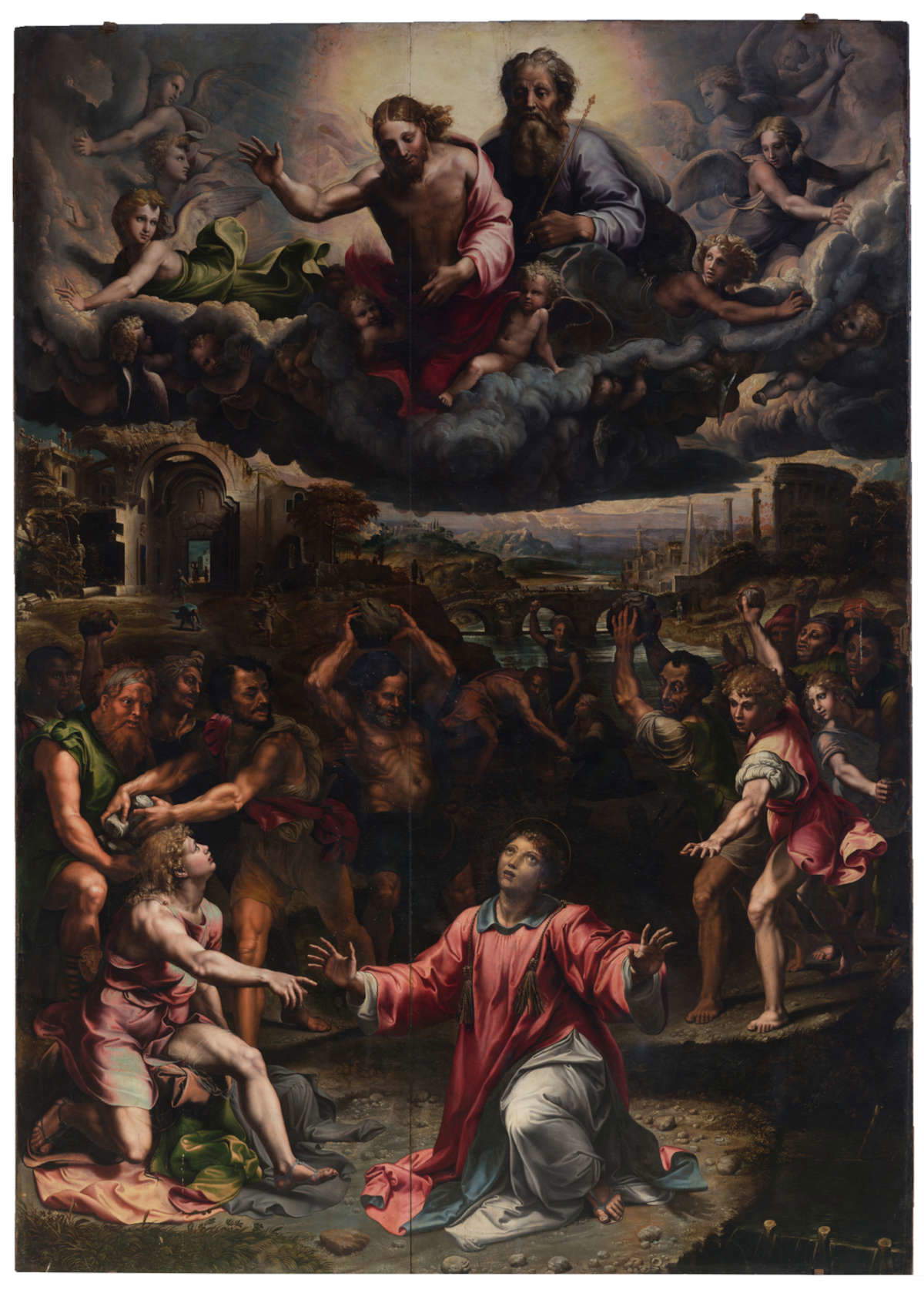
The project is not limited to the exhibition alone. In fact, in preparation for the event, the altarpiece preserved in the abbey underwent a major restoration and diagnostic investigation. Under the supervision of the Soprintendenza Archeologia, Belle Arti e Paesaggio for Liguria, restorer Valentina Tonini supervised the cleaning and conservation phase, while the DIRAAS Department of the University of Genoa conducted infrared reflectographic investigations with the help of the Osiris camera. The analyses made it possible to identify the drawing underlying the pictorial surface, allowing a direct comparison with the Vatican cartoon and offering unpublished results that will be presented to the public during the exhibition.
The scientific research will also be enriched by comparison with other preparatory and derivative works. From the Royal Collection Trust in Windsor will come a rare autograph drawing by Giulio Romano depicting one of the martyr’s executioners, an element later excluded from the final version. Three major works will arrive from the Louvre: a preparatory drawing by Giulio Romano, a recto-verso by Giulio Benso dedicated to the Stoning of St. Stephen, and an additional drawing from the Roman and Umbrian schools reproducing the altarpiece. The concession was approved by director Laurence des Cars with the support of the head of the Cabinet des dessins, Xavier Salmon.
The exhibition will also include a 1:1 scale replica of the altarpiece, created using advanced digital techniques by Factum Arte of Madrid, an international company specializing in the production of very high fidelity facsimiles. The presence of this work at the Accademia (in fact, Giulio Romano’s work will remain on the premises) will enable scholars to conduct further analysis and the public to gain a more direct understanding of the complexity of Giulio Romano’s creative process. The collaboration with Factum Arte, already active on major projects related to Palazzo Te in Mantua, also creates an ideal link between Genoa and the architecture commissioned from the artist by Federico II Gonzaga five hundred years ago.
The exhibition will also include materials that testify to the fortunes of the altarpiece in subsequent centuries. These include replicas executed by Bernardo Castello in 1581 and 1619, respectively preserved in the church of San Giorgio dei Genovesi and the Diocesan Museum in Palermo. These works demonstrate the spread of the figurative model elaborated by Giulio Romano and his influence on painting in the Genoese and Sicilian areas. Further comparisons will be possible thanks to drawings kept at the École des Beaux-Arts in Paris, which document compositional variants discarded by the artist in the final drafting.
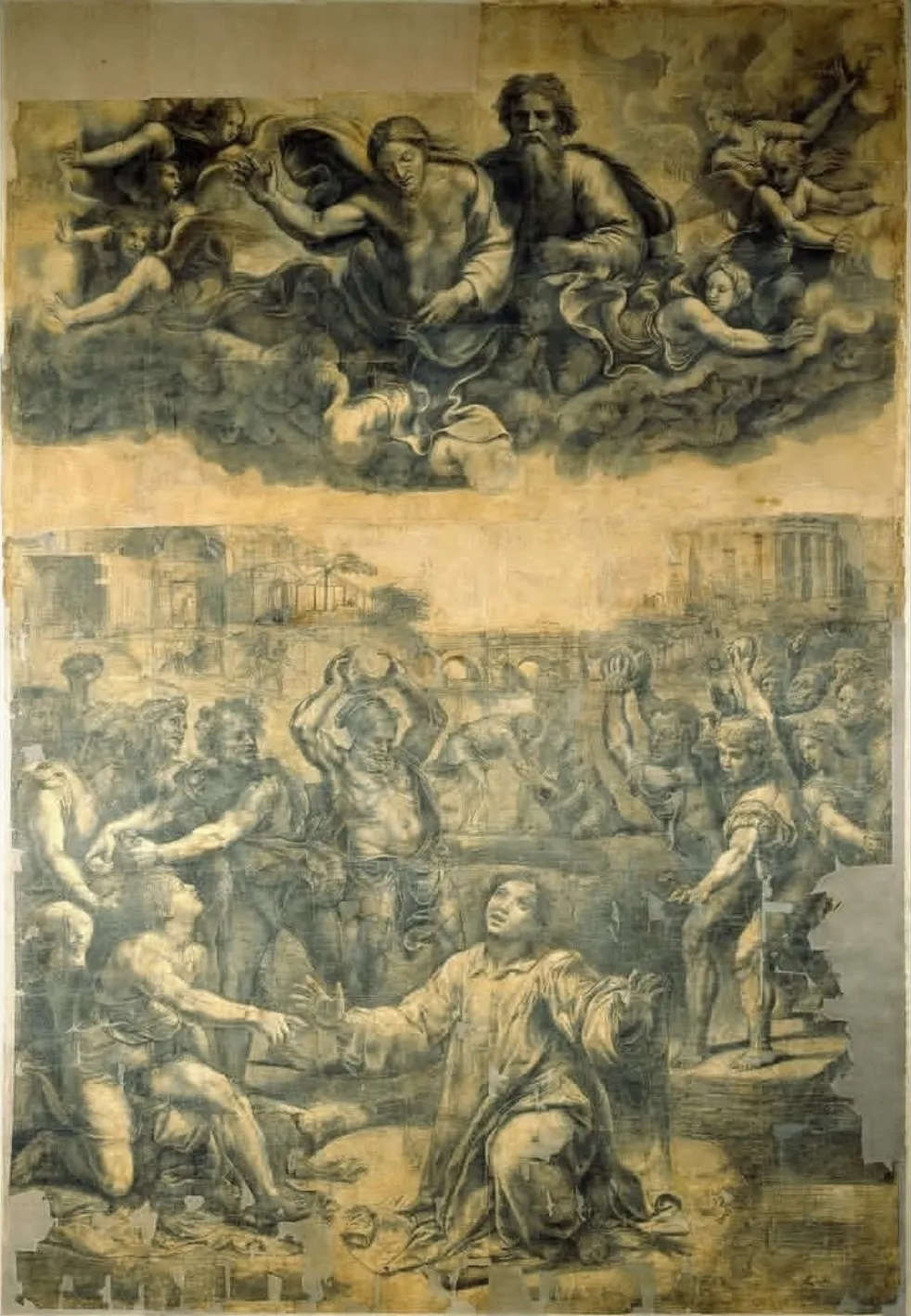
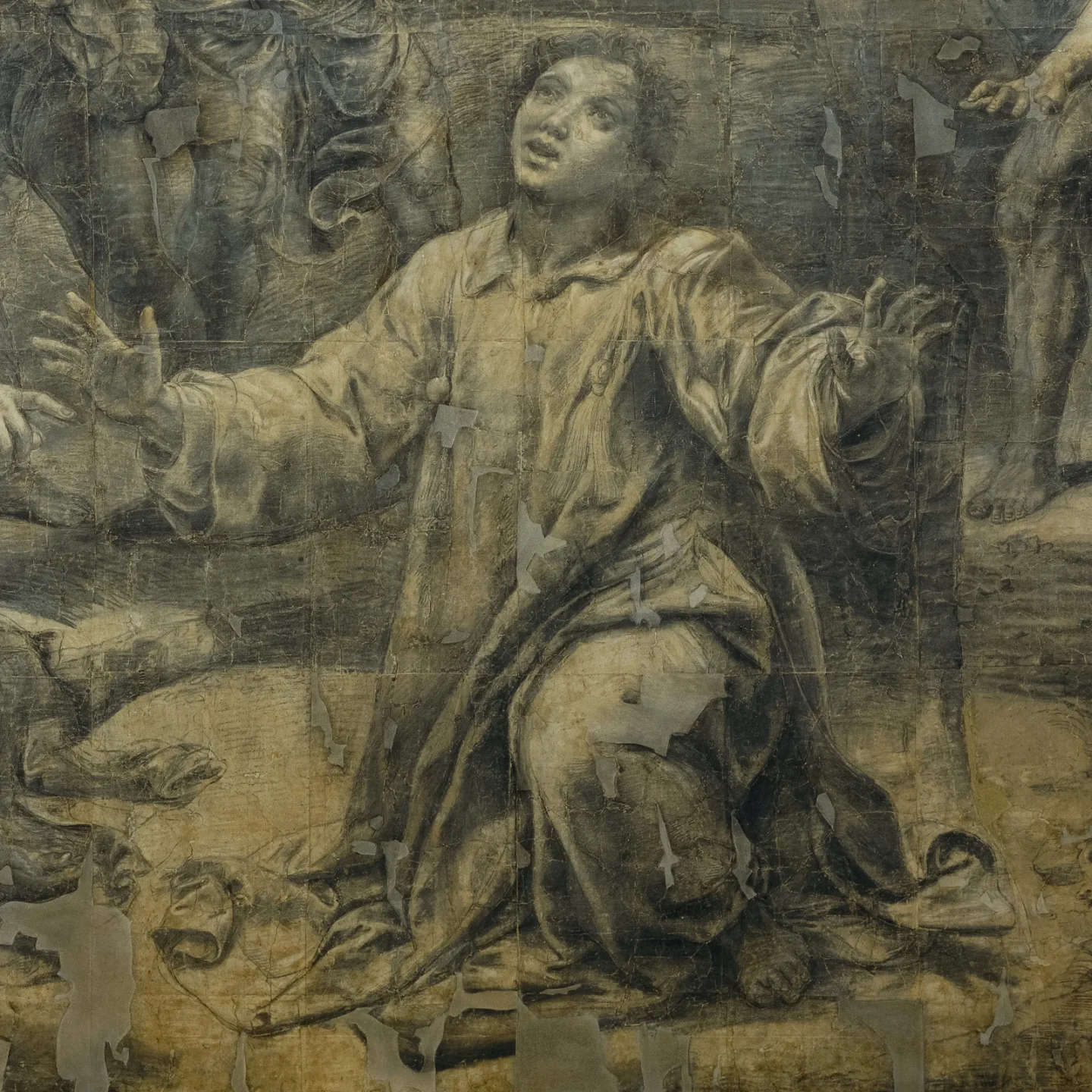
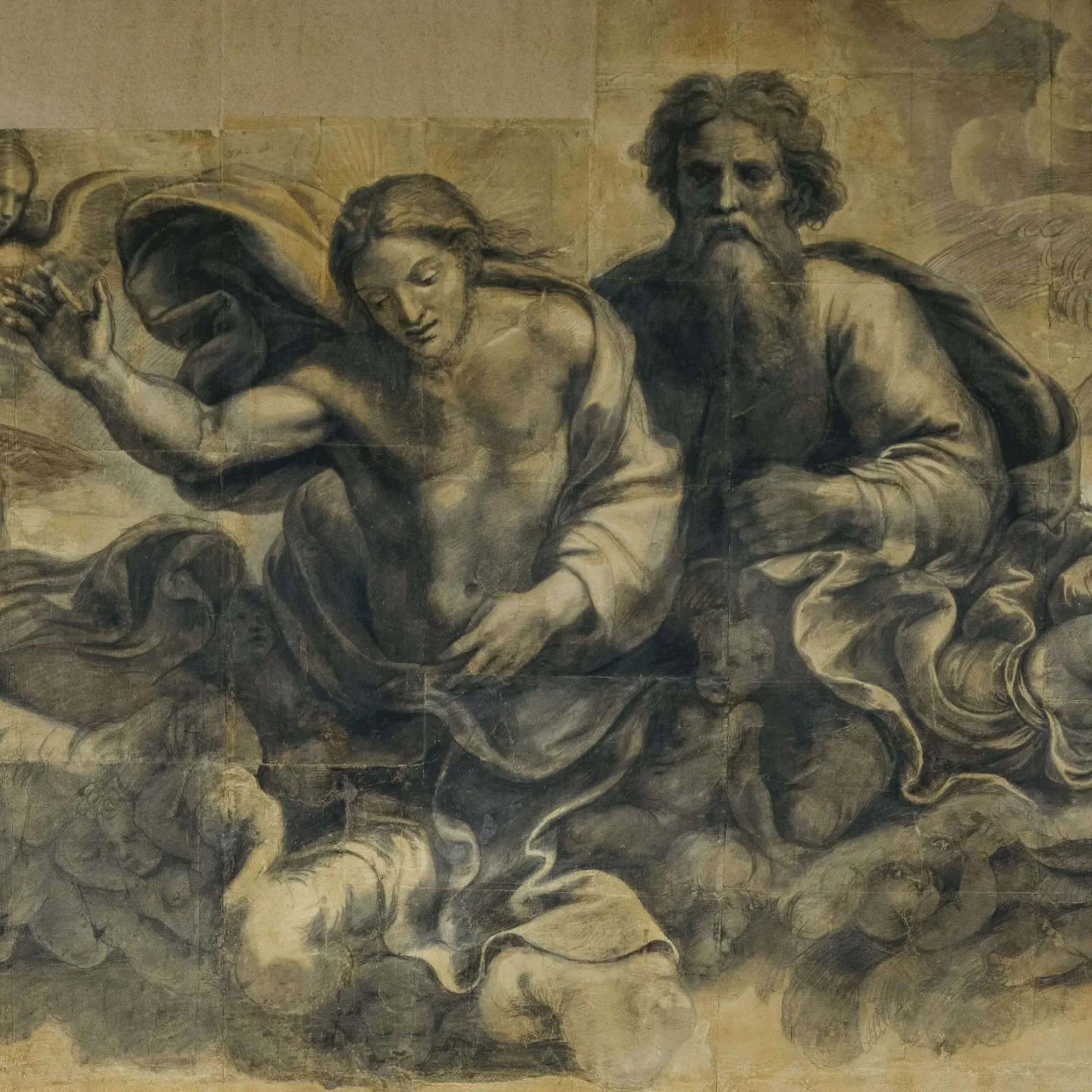
The exhibition’s scientific committee is composed of leading scholars and professionals: Giulio Sommariva, curator of the Museum of the Ligustica Academy; Filippo Biolé, president of the Academy; Maria Clelia Galassi, art historian formerly a regular at the University of Genoa; Cristina Bartolini, director of the Ministry of Culture; Caterina Olcese and Rossana Vitiello of the Ligurian Superintendency; Grazia Di Natale of the Archdiocese of Genoa; and Fabrizio Biferali and Chiara Fornaciari da Passano of the Vatican Museums. The institutions involved include the Vatican Museums, the Soprintendenza Archeologia, Belle Arti e Paesaggio for Liguria, the DIRAAS Department of the University of Genoa and the Archdiocese of Genoa.
The inauguration, scheduled for Sept. 19, 2025 at 5 p.m., will be held in the presence of city and regional authorities, including mayor Silvia Salis, councillor for culture Giacomo Montanari, Liguria Region President Marco Bucci, and councillor Simona Ferro. University of Genoa Rector Federico Delfino and representatives of partner museums, including Fabrizio Biferali and Chiara Fornaciari da Passano of the Vatican Museums and Federica Mancini of the Musée du Louvre, will also be present.
The exhibition will be accompanied by the publication of a monographic catalog that will gather the results of the investigations conducted and offer an in-depth analysis of the altarpiece, its history and fortune. It will reconstruct the circumstances of the commission, the iconographic models of reference, and the events that took the work through centuries of history, from the Napoleonic spoliations to its return to Genoa after the Congress of Vienna, to the damage it suffered during World War II.
The Accademia Ligustica project is part of the broader goal of strengthening the institution’s role as a center of higher education and research. After its recent statehood, the Academy intends to launch a cycle of periodic scientific initiatives dedicated to individual works or artists, with the intention of combining didactics, valorization and popularization. In this framework, the initiative dedicated to Giulio Romano represents, the Academy points out, a model that can be replicated in the future, consolidating the link between the university and museum worlds.
The simultaneous presence of the painting, the preparatory cartoon and related materials thus offers a never-before-seen perspective on the genesis of the masterpiece, allowing scholars to delve into Giulio Romano’s creative method and the public to appreciate its complexity. The exhibition thus becomes not only an occasion of great value for Genoa and Liguria, but also a moment of international significance for art-historical research and understanding of one of Raphael’s most brilliant pupils.
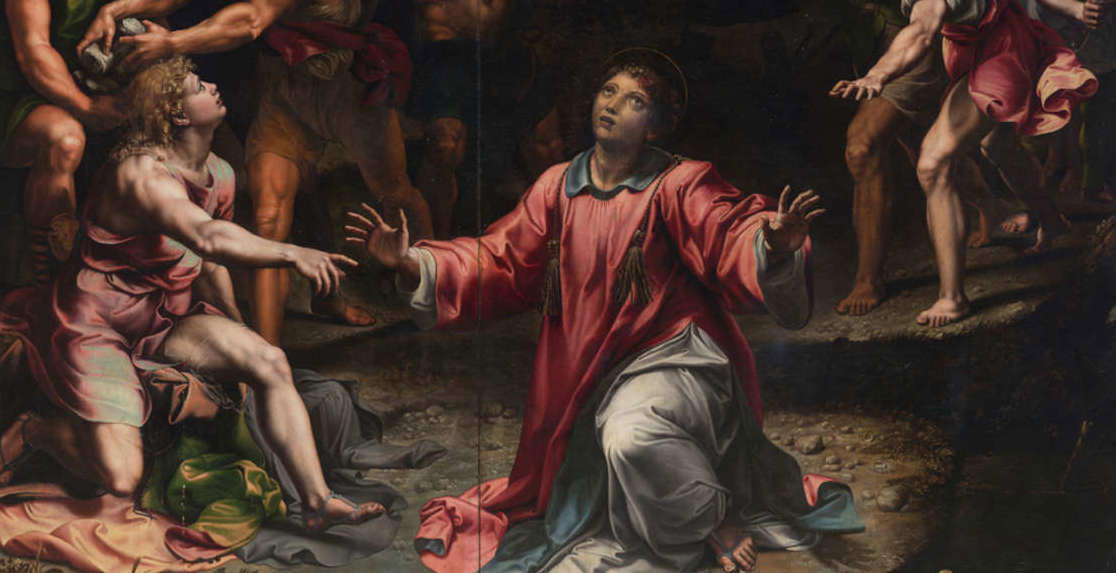 |
| Giulio Romano in Genoa: Saint Stephen's altarpiece and cartoon from the Vatican Museums on display |
Warning: the translation into English of the original Italian article was created using automatic tools. We undertake to review all articles, but we do not guarantee the total absence of inaccuracies in the translation due to the program. You can find the original by clicking on the ITA button. If you find any mistake,please contact us.